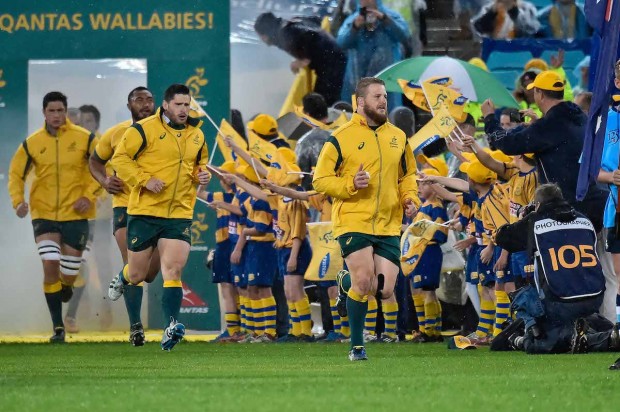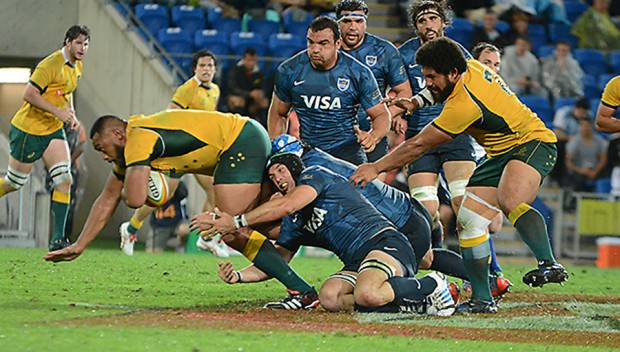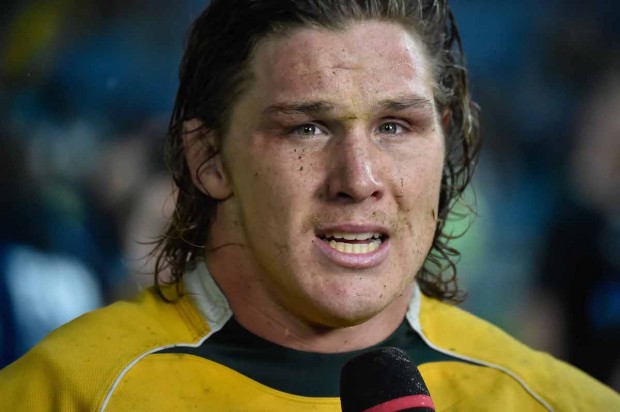In the previous article, we took a step back and looked at where the Wallabies have come over the last year. The diagnosis was pretty clear: not far.
Here, we’ll look forward. What is working and what isn’t, where do changes need to be made, and how can we get the team to where it needs to be in autumn 2015: on a date with William Webb Ellis. And, given I’m in Cape Town this weekend for the rugby, let’s hope it all starts sooner rather than later.
Getting back to Pragmatism
It is often said, not least on this forum, that running rugby is historically the Australian way and therefore the Wallabies should be running the ball. This is lazy logic. First, the premise is simply a highly selective way of thinking. In the 1999 World Cup (seven matches), Australia conceded one try (zero in the knock out stages). In 1991 (six matches), only three (and only one in the knock out stages). So there’s more than one way of looking at what is “historically” the right way for Australian rugby.
Second, the “Australian” way of playing should be the best way. Full stop. Something isn’t right because we’ve done it before; it’s right because it is the best way to win big matches with the resources available.
I agree that, as a broad principle, “carrying the ball to the opposition”, as coach Ewen McKenzie puts it, is a good rule of thumb. But only because it suits the types of players available and their strengths.
However, this only a means to an end. The end is points. Nick Phipps’ quick taps last week were not a wise choice; you gotta take the points on offer. This emphasis on pragamatism was crystal clear in the Wallabies’ excellent win over Ireland in November 2013, but it seems to have been forgotten.
In the second half last week, Argentina replicated the defensive strategy used by the All Blacks when they were down to 14 men in Sydney: not contesting the rucks and using the extra men to spread out across the field. On both occasions, the easiest counter was ignored: the pick and drive. Suck the defenders in, make them overcommit numbers to the breakdown or commit penalties.
Similarly, when Argentina was coming back into the match last week and holes were appearing everywhere in the Wallaby line, Australia continued to counter-ruck vigorously, instead of copying the defensive tactics that had been used so effectively against them.
Kicking is, inevitably, central to getting back to pragmatics. As we saw at Twickenham in November 2013, in Perth against the Springboks, and in Sydney in the wet against the All Blacks, the Wallabies need to dramatically improve the quality of its kicking in play. When we do kick, it can’t be as bad as the Foley and Folau show against the Springboks.
There needs to be a much greater emphasis on effective exit strategies, as well as some development of a short kicking game. As the All Blacks showed in Sydney (and Matt Toomua showed twice in Perth), even old school grubbers and dinks behind the line can, in the wet, be horrible to deal with. Where did the cross-field bomb to Folau go? There is a place for kicking, especially in autumn weather conditions in Europe, but we need to do it well.
Goal-kicking has been vastly better for the Wallabies this year (Australian kickers are clear in second place behind Bok kickers in this years Rugby Championship, for instance; New Zealand’s are last). That needs to continue. Goalkicking yields the most points for the least amount of team effort. Every World Cup winner has had a world class goal kicker (or, in South Africa’s case in 2007, two of them, Percy Montgomery and Frans Steyn).
Leadership
Leaders need to lead by example. But in rugby, they have to be able to get into the ref. Every captain has a different way of relating to the referee. There’s the eloquent conversationalist (Jean de Villiers), the raised eyebrows/ strong and silent type (Richie McCaw), the whining like a little bitch (Bismarck du Plessis), the annoyingly right all the time and forever in the ref’s ear (George Gregan).
I’m not sure Michael Hooper is convincing a referee of anything. He, not unlike Stephen Moore, just isn’t a great communicator. This is one area in which Ben Mowen was excellent: he knew when to talk to the ref, when to push the issue, and how to get his point across effectively and clearly. We might be missing Big Ben a lot more than we think (more on this later).
Bottom line is I see the captaincy for next year as still very much open; the erudite David Pocock might fancy his chances here.
Set Piece
Swings and Roundabouts. The Wallaby scrum has been much better this year than last, even though the team depends very heavily on just two props, James Slipper and Sekope Kepu. At the same time, the lineout has become much less effective and predictable. The Wallabies generally use one of two formations: a five man with three jumpers inbetween two props; or a full lineout with Prop – Palu/Skelton – Prop in the front pod, then three jumpers, then Michael Hooper right at the back.
As this description suggests, the set-ups are actually very similar and therefore so are the various options within each framework. But it just isn’t quite working; the Ben Mowen lineout of last year, which secured so much good ball for the backs, seems a long time ago.
The Wallabies need to both train people other than Simmons in the calling role and develop new structures. The ten or eleven person maul, used so effectively last year (again, see the Ireland match), has disappeared, only to pop up in the All Blacks’ play book.
So has the use of multiple pods to spread the opposition’s jumpers out. This last would be ideal, for instance, this week against the Springboks. Victor Matfield is always going to be the key challenger on Aussie ball. So splitting the jumpers apart, rather than keeping them together and relying heavily on movement, as Australia is doing at the moment, is the smart move.
Players
I’ve left this for last. There is far too much of a focus in the media on individual players, as though the coaches job ended, rather than started, at the selection table. You need the right tools to execute the plan you have, in rugby, as in business, as in life. So that’s why we’ve talked about the plan first.
I’d think about it more in terms of roles, than individuals. For instance, if the Wallabies are going to (generally) keep the ball in hand, they need to invest in guys who can gain metres after contact. Not just Tatafu Polota-Nau and Wycliff Palu, but Will Skelton, Sean McMahon, and Tevita Kuridrani. Having multiple dominant runners shares the burden of getting over the gain line around; there’s a lot to learn from the Waratahs here. This just doesn’t seem to be appreciated at the moment. No-one in world rugby is looking at a combination of Fardy, Sam Carter, and Simmons as effective guys to get you going forward. The balance in the pack is all wrong and the absence of Skelton, even off the bench, is perplexing.
More generally, the team needs to be thinking ahead. It is problematic that one of the most conservative teams in world rugby, the Springboks, are blooding the outstanding Handre Pollard this year, while the Wallabies refuse to do likewise. Young guys like McMahon, Andrew Kellaway, Kyle Godwin (when uninjured), and Luke Jones might all be key elements of the squad in a year’s time. History shows that they need chances now to get to where they need to be next year.



